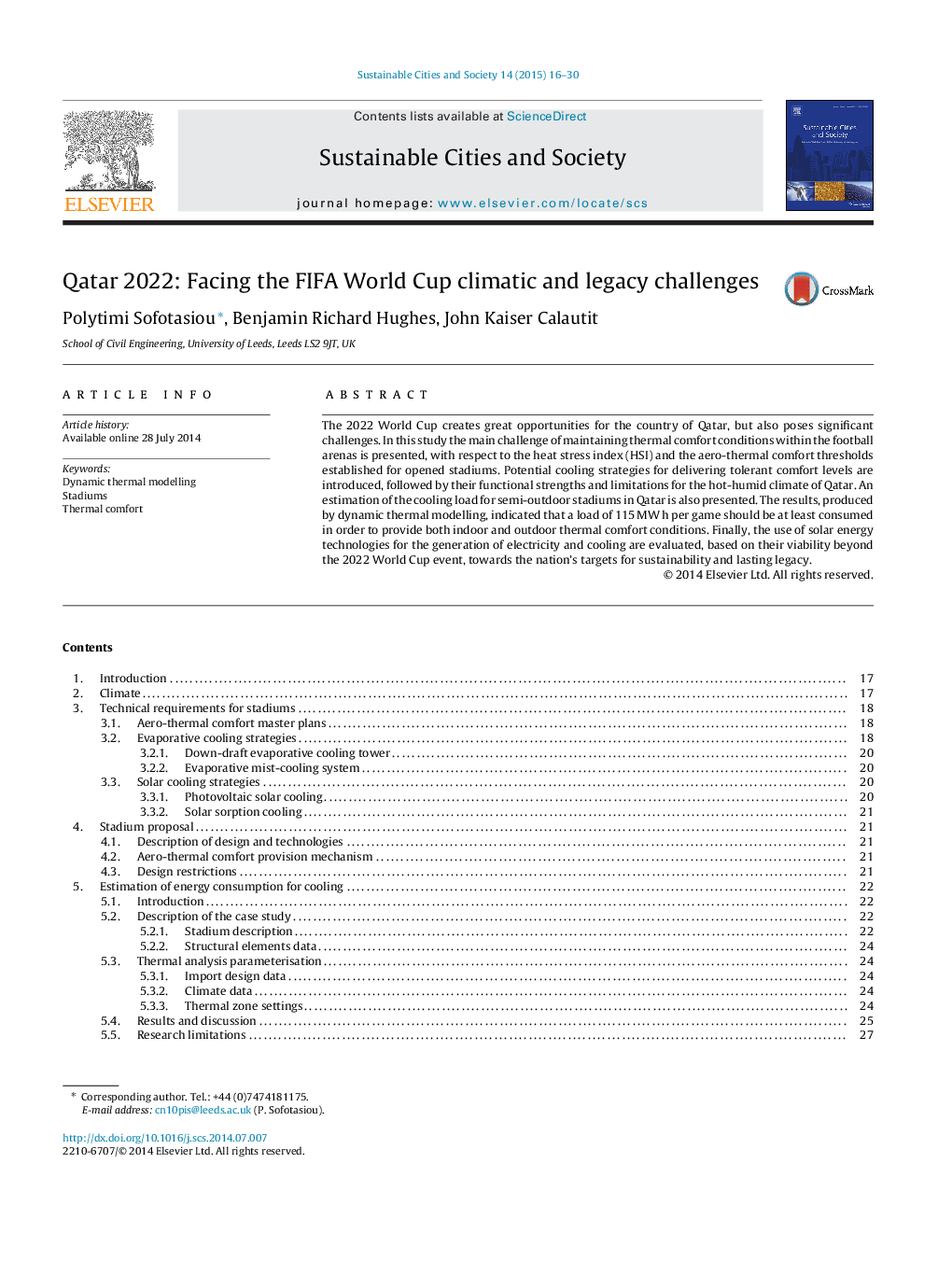| Article ID | Journal | Published Year | Pages | File Type |
|---|---|---|---|---|
| 6776540 | Sustainable Cities and Society | 2015 | 15 Pages |
Abstract
The 2022 World Cup creates great opportunities for the country of Qatar, but also poses significant challenges. In this study the main challenge of maintaining thermal comfort conditions within the football arenas is presented, with respect to the heat stress index (HSI) and the aero-thermal comfort thresholds established for opened stadiums. Potential cooling strategies for delivering tolerant comfort levels are introduced, followed by their functional strengths and limitations for the hot-humid climate of Qatar. An estimation of the cooling load for semi-outdoor stadiums in Qatar is also presented. The results, produced by dynamic thermal modelling, indicated that a load of 115Â MWÂ h per game should be at least consumed in order to provide both indoor and outdoor thermal comfort conditions. Finally, the use of solar energy technologies for the generation of electricity and cooling are evaluated, based on their viability beyond the 2022 World Cup event, towards the nation's targets for sustainability and lasting legacy.
Related Topics
Physical Sciences and Engineering
Energy
Renewable Energy, Sustainability and the Environment
Authors
Polytimi Sofotasiou, Benjamin Richard Hughes, John Kaiser Calautit,
